'Pain Hustlers' (2023): An Opioid Crisis
What starts off as a success story for a single mother living below the poverty line, slowly begins to weave itself into a tangled web of greed, guilt, and destruction.
Gus Van Sant is the director of many popular movies, such as Good Will Hunting (1997) and Elephant (2003). Good Will Hunting follows a young man who works as a janitor at a prestigious college who discovers that he possesses an extraordinary talent for mathematics. In contrast, Elephant explores the lives of two deeply troubled young men who are planning a school shooting. Van Sant also played a pivotal role in the New Queer Cinema movement, which focuses on queer-themed independent movies and was first coined by B. Ruby Rich in the 1990s. Being a part of the queer community himself, he contributed works like Mala Noche (1985) and My Own Private Idaho (1991). The latter film tells the story of a young male sex worker with narcolepsy who embarks on a journey across the globe to find his estranged mother. While the plots of these films are drastically different, they share many similarities from both a theatrical and cinematic standpoint.
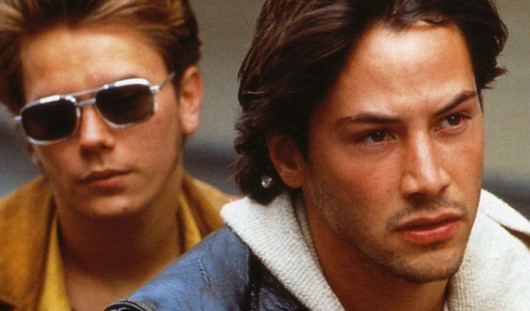

In My Own Private Idaho, the viewer witnesses an array of different relationships, most of which center around close friends of Mike (River Phoenix). The group of nomads he spends time with are more like a brotherhood and play a pivotal role in both the plot and Mike’s life. They are loyal, never taking advantage of one another, and always have each other’s backs. Throughout the film Mike relies on these friends to not only survive, but to enjoy life. If not for them, this film would not be as lighthearted nor resonate as well to viewers.
Gus Van Sant skillfully portrays different aspects of masculinity through his characters, Mike and Scott (played by Keanu Reeves), which serves as another vital theme in the film. Scott’s discomfort with discussing his emotions and listening to Mike do so stems from his fear of vulnerability, embodying elements of toxic masculinity. On the other hand, Mike embodies healthy masculinity. He is unafraid to embrace and share his feelings, never feeling emasculated by doing so. Rather than turning into a malicious creature, Mike navigates a delicate path with the sole purpose of reconciling with his mother, providing the audience with insight into the consequences of a troubled parent-child relationship.
This leads to the fourth message of My Own Private Idaho – a rebellion against societal norms. The film’s main character, Mike, grapples with psychosomatic issues and is a gay sex worker living on the road with his best friend, who becomes a sex worker as a form of defiance against society’s expectations before pursuing wealth. Their lives are far from what society deems as ‘normal.’ The film offers a unique perspective through its distinctive characters, reinforcing these underlying messages.
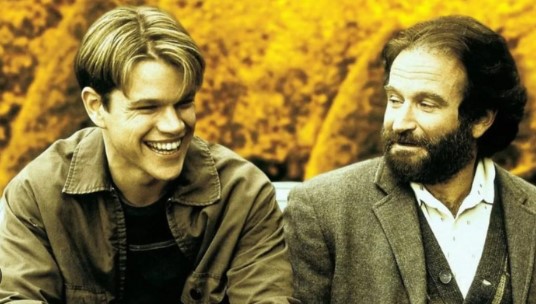

Although Good Will Hunting is drastically different from My Own Private Idaho, they share common themes. There is the brotherhood and loyalty: Will (Matt Damon) and Chuckie (Ben Affleck) are inseparable and will do anything to ensure the other succeeds. They truly support and love one another. Relationships are critical to the plot, showing the viewer how someone like Will, who is closed off and hiding from their deepest desires, can be encouraged by the right people to leave their comfort zone and chase down their dreams.
Will Hunting’s journey depicts masculinity as an effort to reconstruct manhood from what it is “supposed to look like,” into what he wants it to be. Originally, Will has this idea that a man is only a man as long as he hides his true feelings, vulnerabilities, and fears. He is convinced that a man must only earn a living through hard labor, and scoffs at “soft careers” like academia. These ideas are so deeply ingrained in him that he cannot accept love and help from others. His therapist, Sean Maguire (Robin Williams), represents a healthier masculinity. He begins to understand Will better and helps him break down his walls so that he can live a full life, and take chances on love and true happiness.
Will’s fight against societal norms can be seen in how he refuses to accept life-changing opportunities. Instead of leaping at the chance to escape poverty and become a world-renowned mathematician and trailblazer in revolutionary mathematics, he opts to stay in Boston as a blue collar worker. Society expects a person to drink up these opportunities and throw their old life away. Defiantly, Will chooses to be unphased by the glittering new life presented to him on a silver platter. He thinks it is dishonorable to be something other than what he is now.
But honestly, he’s just scared of this new life and the changes it will bring. Sean shows him how outdated this mindset is and how he needs to break free from it. He does the same when Will is afraid of committing to his girlfriend, Skylar (Minnie Driver). Sean holds nothing back and is candid with Will about how absurd it is to push someone away out of fear that the relationship might not live up to expectations. Skylar proves to be the perfect match for Will – everything he could have hoped for and more. Yet, the mere thought of her finding any aspect of him unappealing terrifies Will to a point where he can’t make her a permanent part of his life. The role this woman plays in his life is of paramount importance. He’s never been happier, and yet he struggles to accept it and allow himself to desire it.
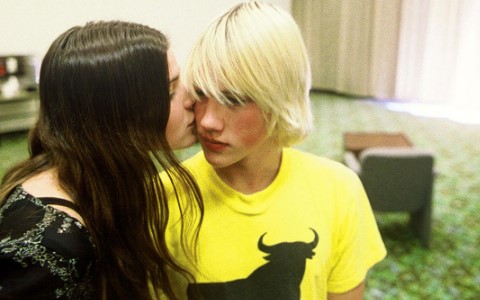

Elephant stands in stark contrast to these two films, yet it shares common thematic elements. It’s not until the film’s conclusion that we are introduced to its main characters, Alex (Alex Frost) and Eric (Eric Deulen), and witness the dynamics of their relationship. Despite the lack of background information, it’s evident that Alex and Eric share a close bond. Their loyalty and mutual support are evident in their planning and preparations. They confide in each other, sharing private and intimate moments, and it’s clear that they have no other friends or emotional connections with anyone else. Their shared goal of committing mass murder would not hold the same depth of meaning if only one of them were involved. However, this relationship takes a dark turn when Alex decides, since they both face certain death, to shoot and kill Eric.
The role of women, or rather, their absence, remains another compelling aspect. Throughout the film, there is a notable absence of interactions with women; even Alex’s mother appears only briefly, and both characters confess to never having experienced their first kiss. The movie underscores their lack of positive female influence and their longing for that type of connection.
The portrayal of toxic masculinity and the battle against societal pressures is a central theme within these characters. The striking lack of support from their community, both in addressing external and internal pressures, serves as a compelling call to action. In the United States, we’ve witnessed numerous school shootings carried out by students, yet a viable solution to prevent these tragedies and provide assistance to the clearly troubled youth remains elusive. It becomes evident to the audience that characters like Alex and Eric have been deeply affected by their struggles, and they perceive no alternative but to resort to violence, targeting their peers and their high school for destruction.
In My Own Private Idaho, one of Van Sant’s formal strategies stands out through his masterful use of extreme close-ups. Throughout the film, characters are framed in a way that entirely fills the space, providing the audience with an intimate and personal view of their expressions, thus deepening the emotional connection to the characters. This unique technique is evident in Van Sant’s approach to tracking shots, as exemplified in a scene with Bob (William Richert) and Scott conversing in the abandoned building they all call home, discussing their plans to rob a band coming to town. The camera closely follows Bob’s movements, tracking his every step. Then, the camera comes to a halt, allowing the audience to watch him walk away, only for him to suddenly stop and turn around, resuming the tracking shot as he continues his walk. This creates the sensation of walking alongside the character, experiencing events in real time, offering viewers a truly immersive cinematic experience.
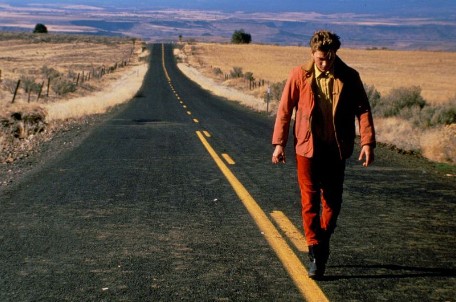
Another significant element is the keen focus on the settings and landscapes in the film. Each time Mike embarks on a new journey, the film treats us to an extended sequence of wide landscape shots, specifically emphasizing the roads. These shots go beyond mere establishing shots; they symbolize not just the physical path that Mike must traverse but also the internal journey he undertakes (Taubin). Each landscape mirrors Mike’s emotions and experiences at that moment. In the beginning of the film, he articulates the uniqueness of each road, expressing familiarity with one and a sense of having been in a similar situation before. It hints at the cyclical nature of his life. Towards the conclusion of the film, there’s a poignant full-circle moment as Mike once again stands at that same road. After enduring everything he has been through, he finds himself back at the very spot he started.
The utilization of diegetic and non-diegetic sound throughout the film plays a crucial role in guiding the audience’s emotions and their engagement with the narrative. In a particular scene where Mike and Scott are conversing inside a restaurant, the camera is initially positioned indoors. Here, the audience becomes immersed in the sounds of clinking silverware against dishes, the soft rustle of clothing, and gentle background music. However, when the camera shifts to an exterior angle, the diegetic sounds transform into the honking of cars and the rush of traffic, even as the clinking of silverware persists. This abrupt transition, from the tranquility of a restaurant to the bustling noise of the city, serves to jar the audience’s senses, reinforcing the film’s intent of making viewers feel like voyeurs—eavesdropping on a private conversation in a place where they don’t quite belong.
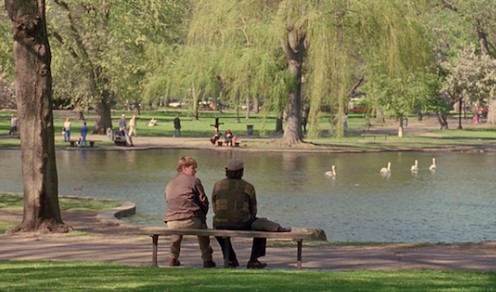
In Good Will Hunting, we find similar stylistic choices at play. The film employs a range of extreme close-ups, especially during emotionally charged scenes when Van Sant aims to immerse the audience in the character’s feelings. Additionally, the same distinctive tracking shots are employed, effectively transporting the viewer from the confines of the screen to the streets of 1990s Boston.
Throughout the film, there are several instances of extended scenic shots that revolve around Will. For instance, during his session with Sean at the park, after Will’s prior efforts to humiliate him have unraveled, he sits on a bench deep in contemplation. His face reflects the emotional turmoil following his actions, contrasting starkly with the serene beauty of the park that surrounds him. This raises a thought-provoking question: what does the audience need to feel in this moment? Should they sympathize with Will or find solace in the tranquility of the scenery? A similar inquiry arises during the scene preceding Skylar’s departure for California. Will, once again, finds himself on a park bench overlooking the Boston skyline, reflecting on how he mishandled their relationship.
These scenes exemplify how the film manipulates the viewer’s emotions, compelling them to navigate a rollercoaster of feelings.
The use of sound, or more precisely, the strategic absence of it, amplifies the impact on the audience. In emotionally charged scenes—such as when Will ends his relationship with Skylar, during therapy sessions, or in the iconic moment when Sean tells Will, “it’s not your fault”—silence prevails. Even diegetic sound is minimized, focusing solely on what’s essential, eliminating any distractions and allowing the unfiltered emotions of the characters to resonate deeply with the audience. It’s only towards the culmination of these scenes that non-diegetic music makes its entrance, creating a crescendo of emotions for both the characters and the viewers.
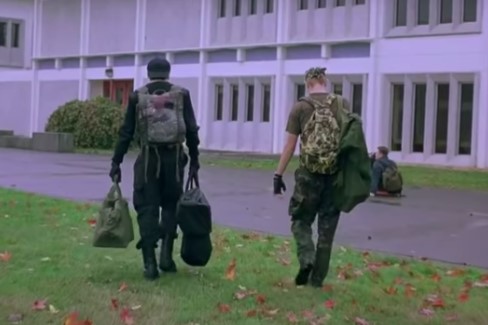
Finally, in Elephant similar stylistic choices come into play. The extreme close-ups serve to draw the audience closer to the characters, allowing them to connect with the characters on a more intimate level. The tracking shots immerse the viewer, making them feel as if they are walking in the footsteps of the characters through the school hallways.
The extended sequences of the serene sky appear to be a deliberate invitation from Van Sant, urging us to take a respite from the routine of following students on an ordinary day. This same shot is then employed to offer a reprieve from the horrors witnessed, a momentary escape from the grim acts committed by Alex and Eric.
Throughout the film, the absence of non-diegetic sound during the entire school shooting scene enhances the stark realism experienced by the audience. Had non-diegetic music been introduced, the impact of that scene would have been significantly diminished.
Reference: Taubin, Amy. “My Own Private Idaho: Private Places.” The Criterion Collection, 7 Oct. 2015, www.criterion.com/current/posts/596-my-own-private-idaho-private-places#:~:text=The%20main%20source%20materials%20for,entire%20narrative%20through%20Mike’s%20consciousness.Accessed 12 October 2023.
Related lists created by the same author
What starts off as a success story for a single mother living below the poverty line, slowly begins to weave itself into a tangled web of greed, guilt, and destruction.
Related movie/TV/List/Topic
Given that Charlie Cox is having a moment with the rise in interest in 'Daredevil,' let's return to one of his earlier movies: the fantasy romance 'Stardust' where he shines amidst a slew of characters, from a stereotypical witch to a crossdressing pirate.